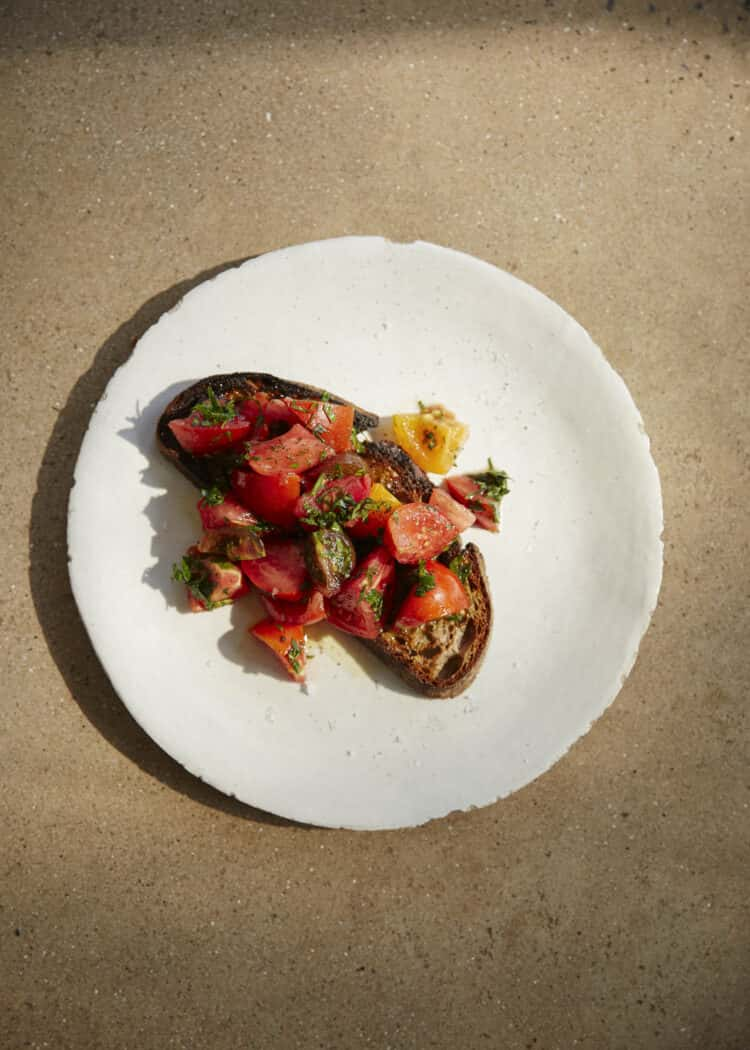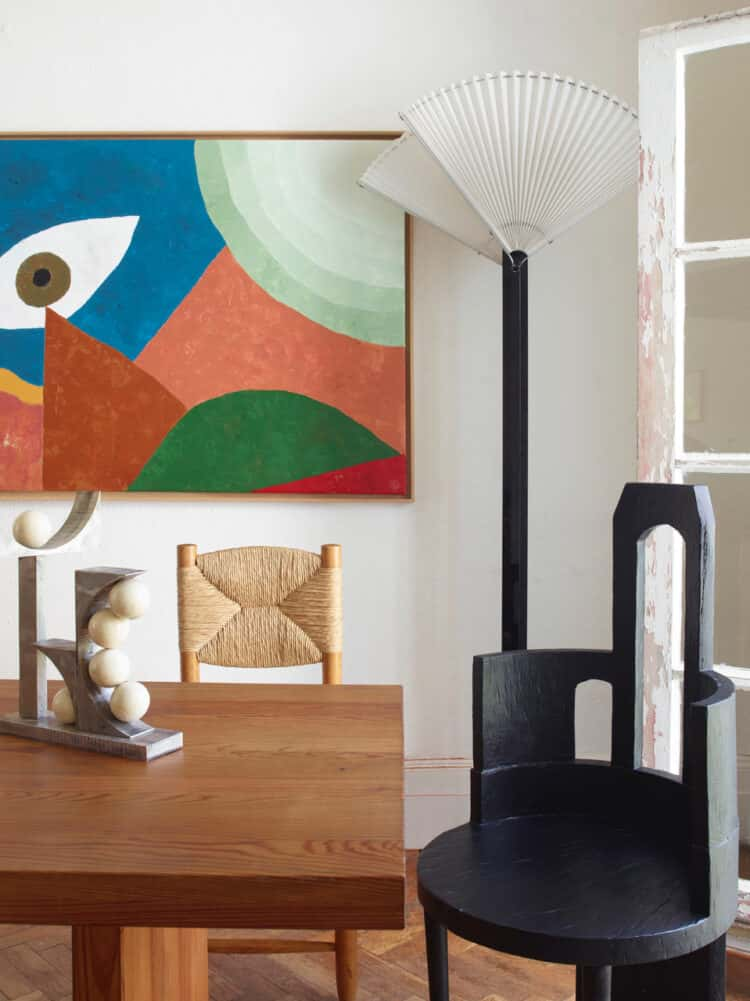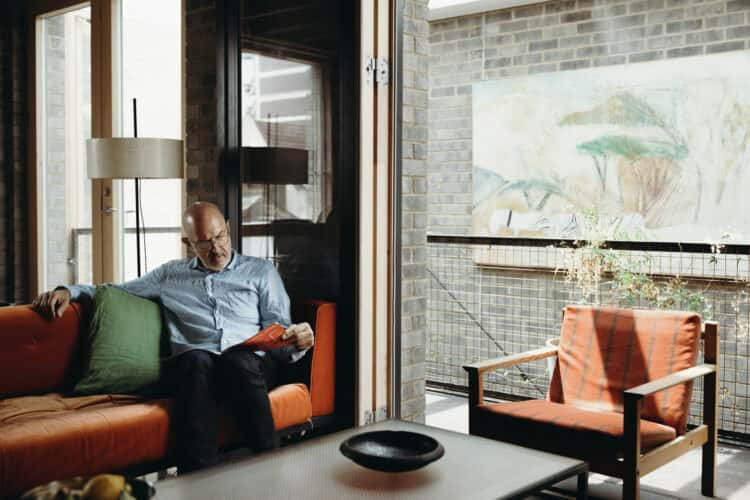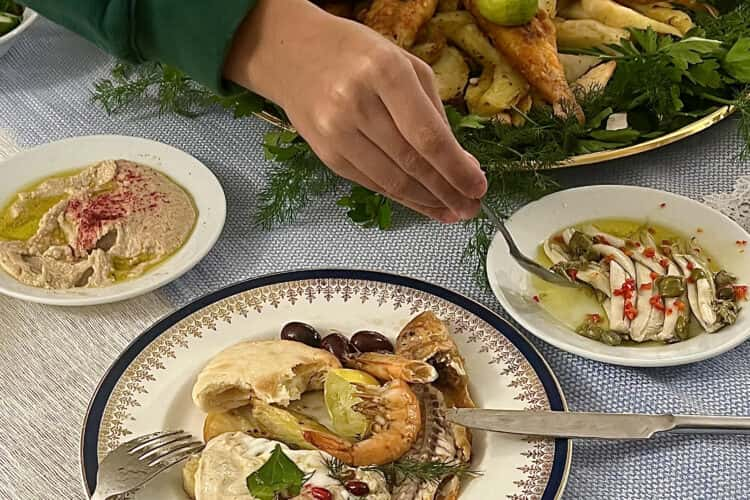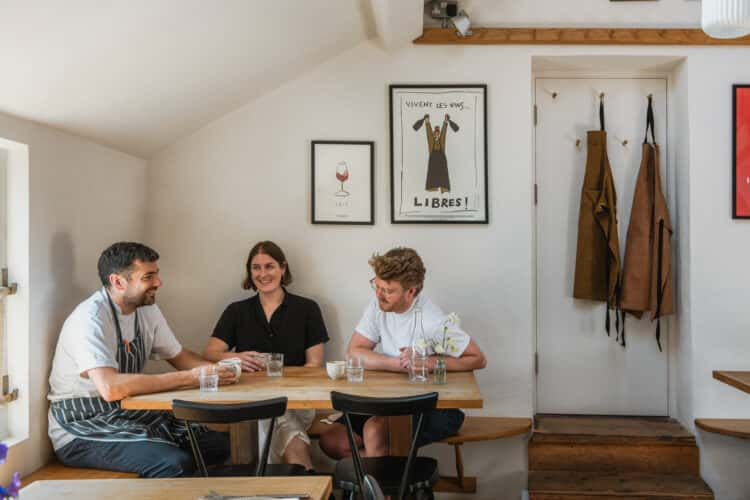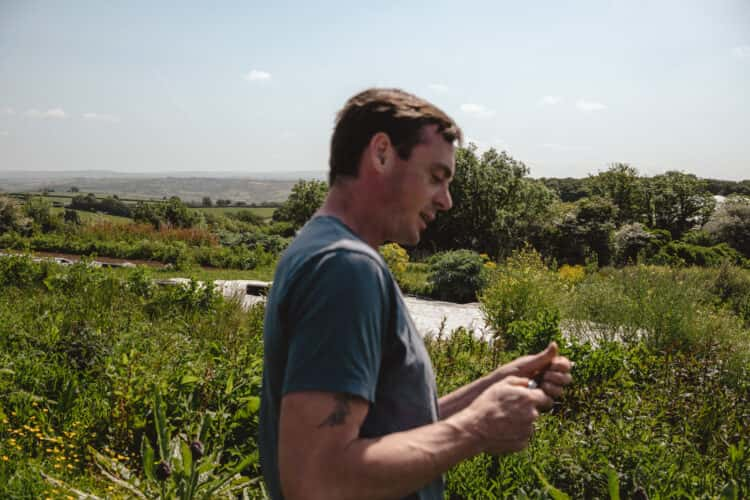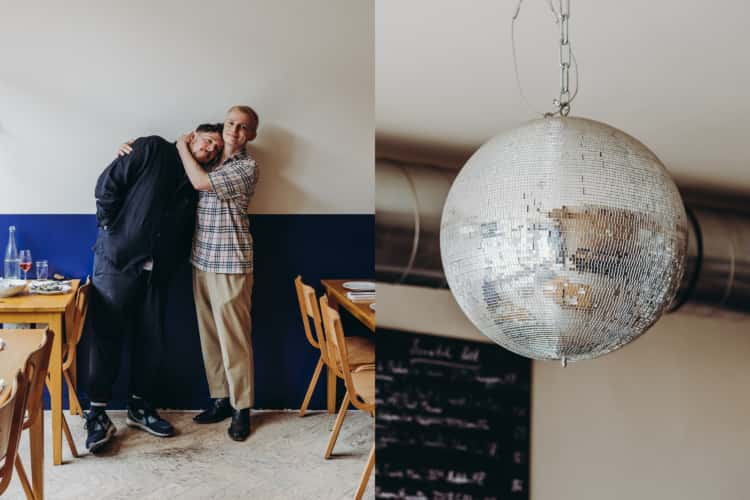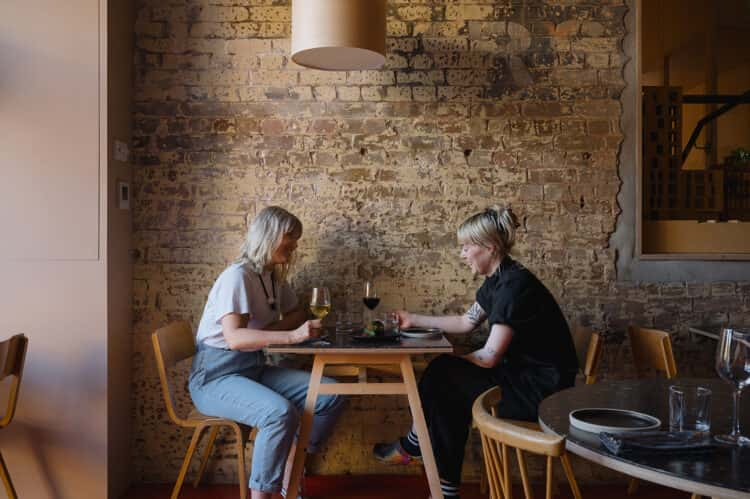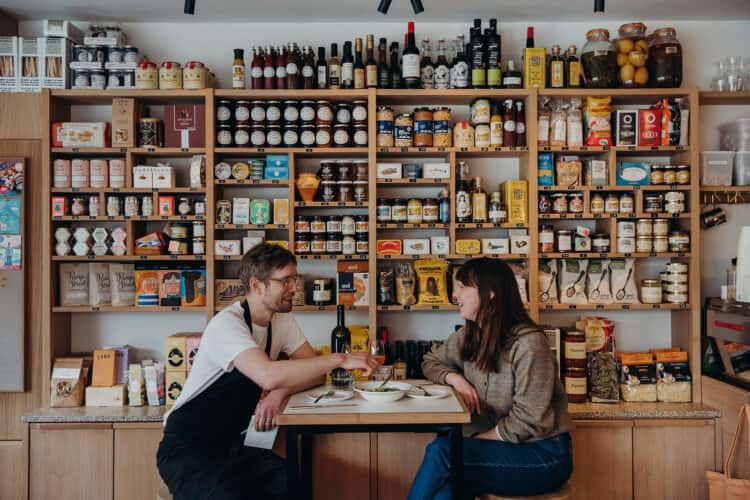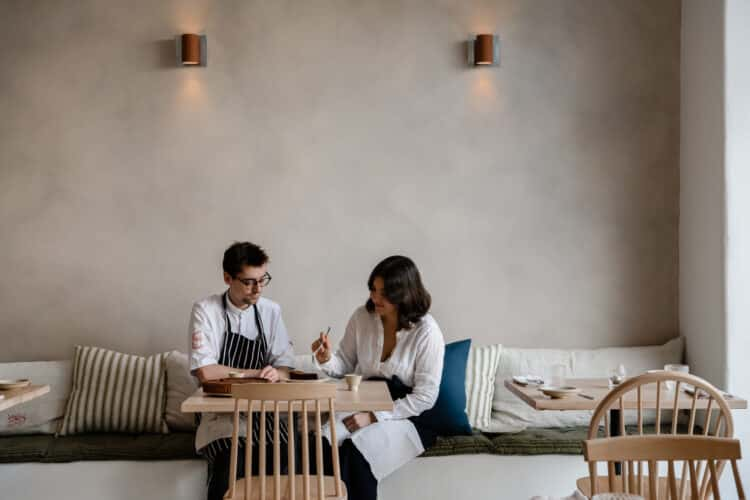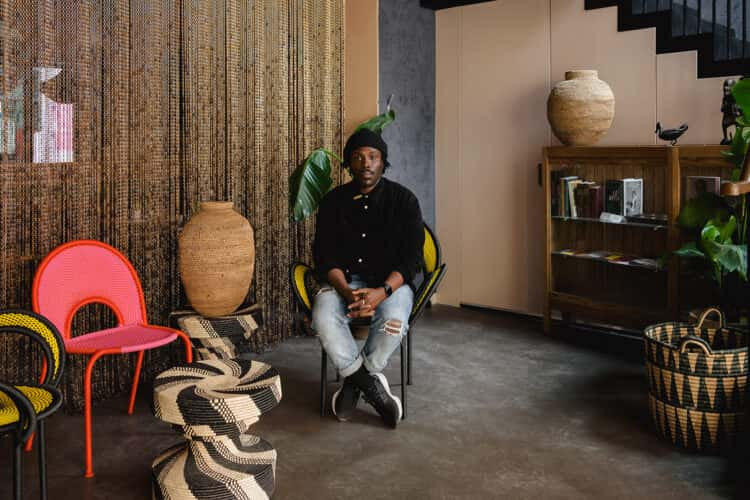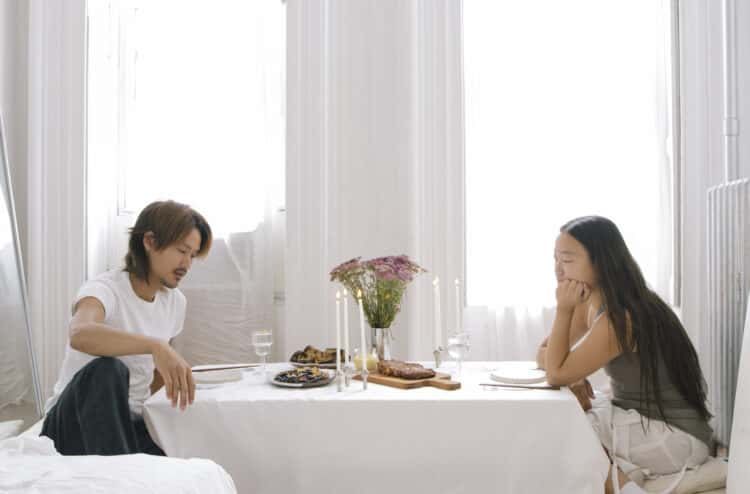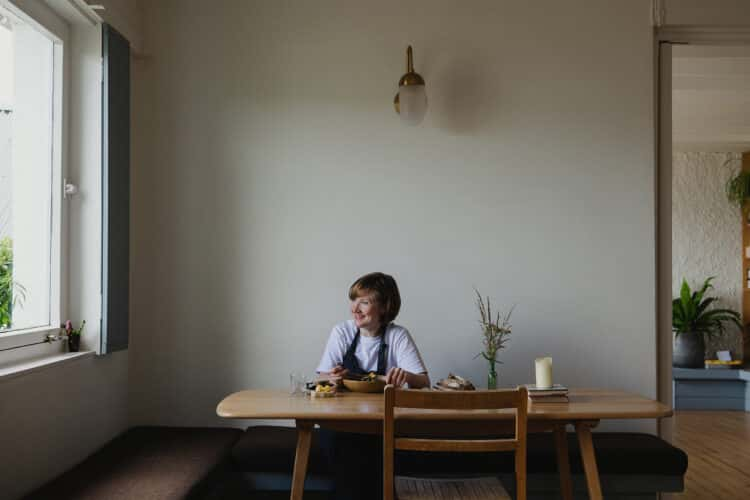Gill Meller on the specific pleasure of a seasonal tomato at his sea-facing house in Devon
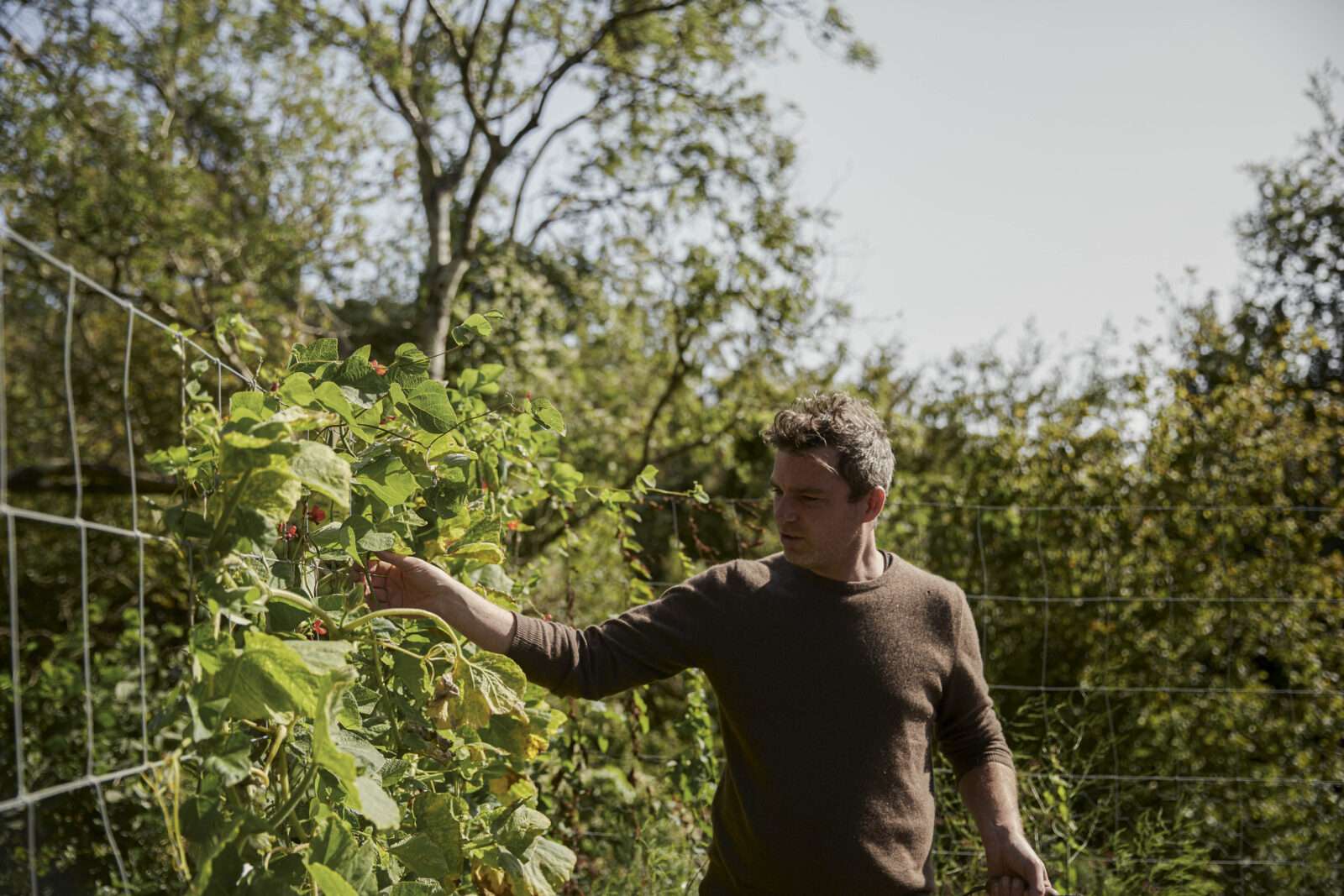
Handmade wooden furniture and ceramics, a bountiful allotment, views of the sea and a secluded wooded setting: it’s a good life that chef and writer Gill Meller’s got going on the Devon coast. Here, he talks food, cooking and eating, and shares a recipe for an Italian bruschetta to make the most of the final few weeks of tomato season.
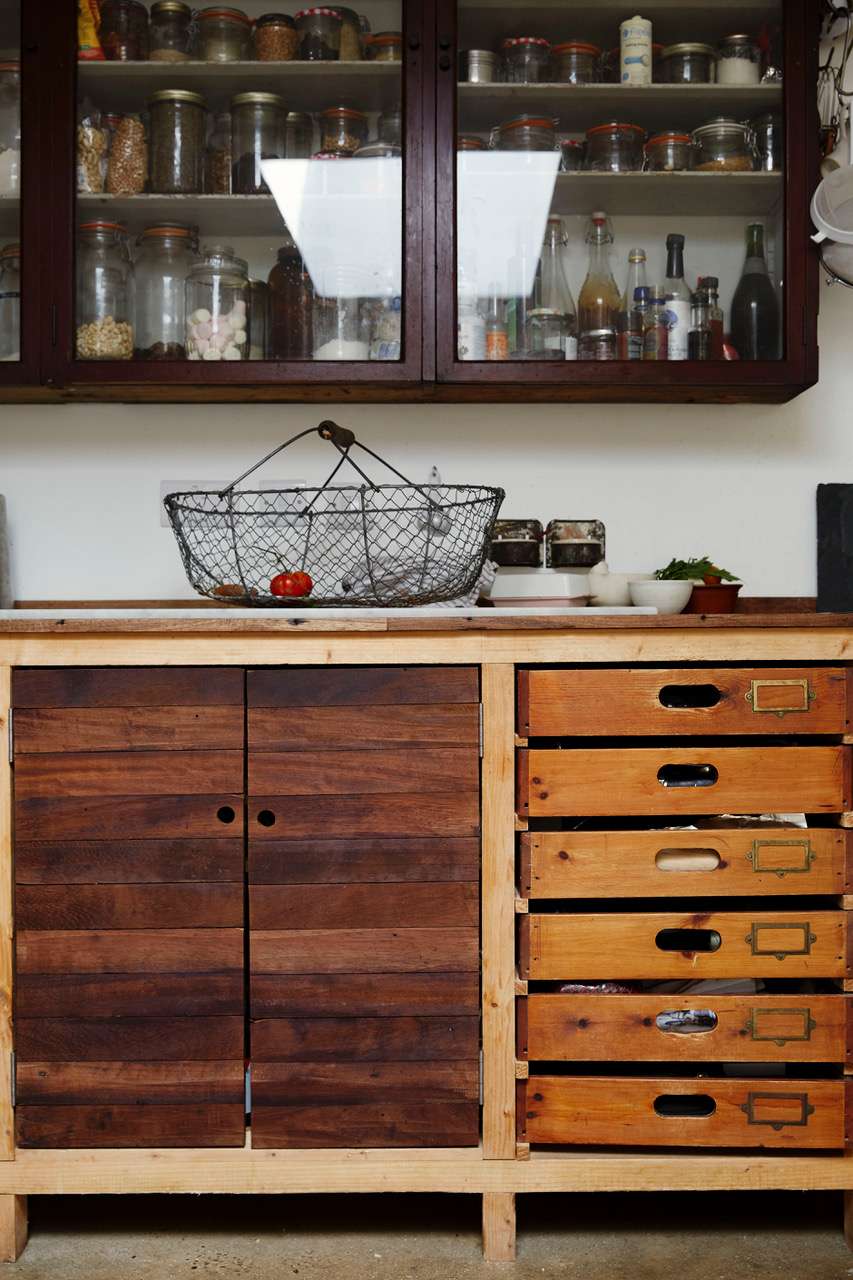
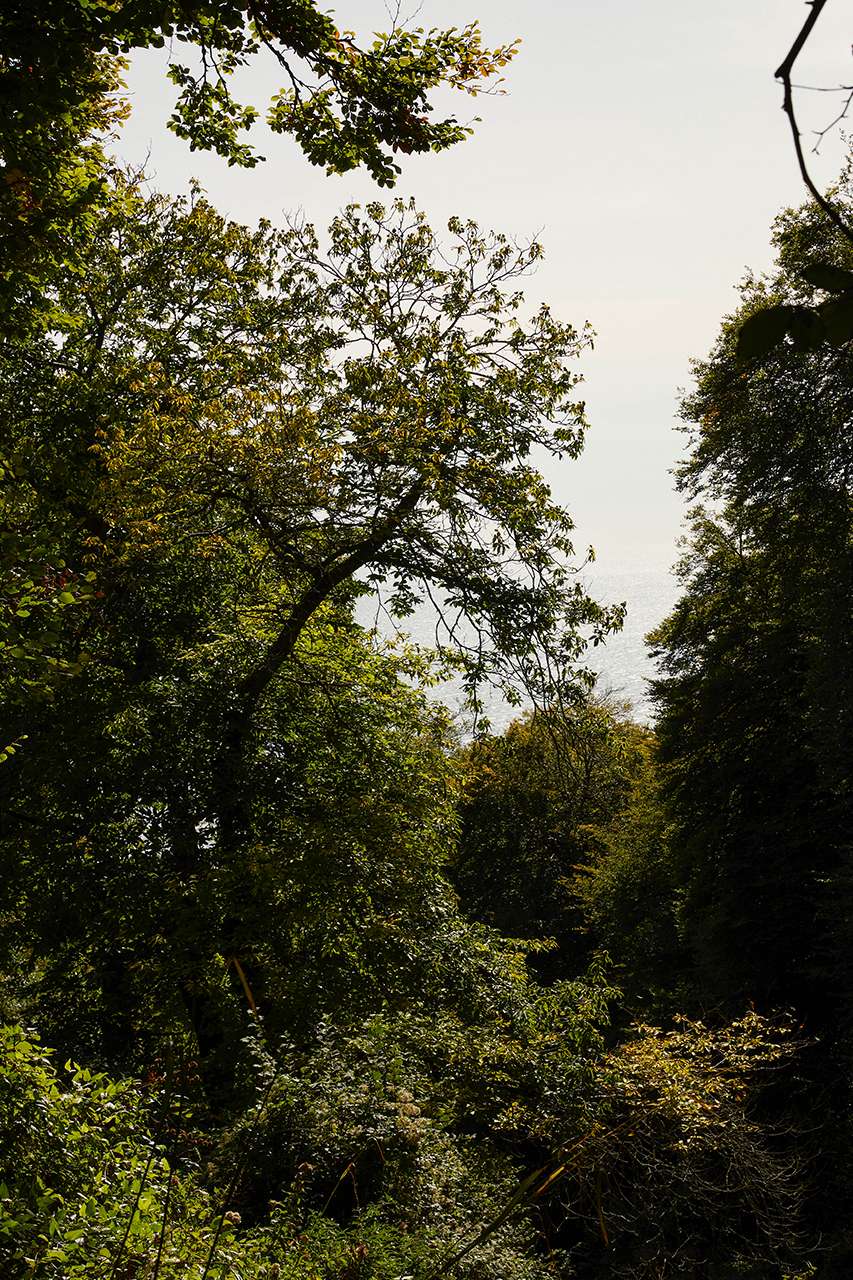
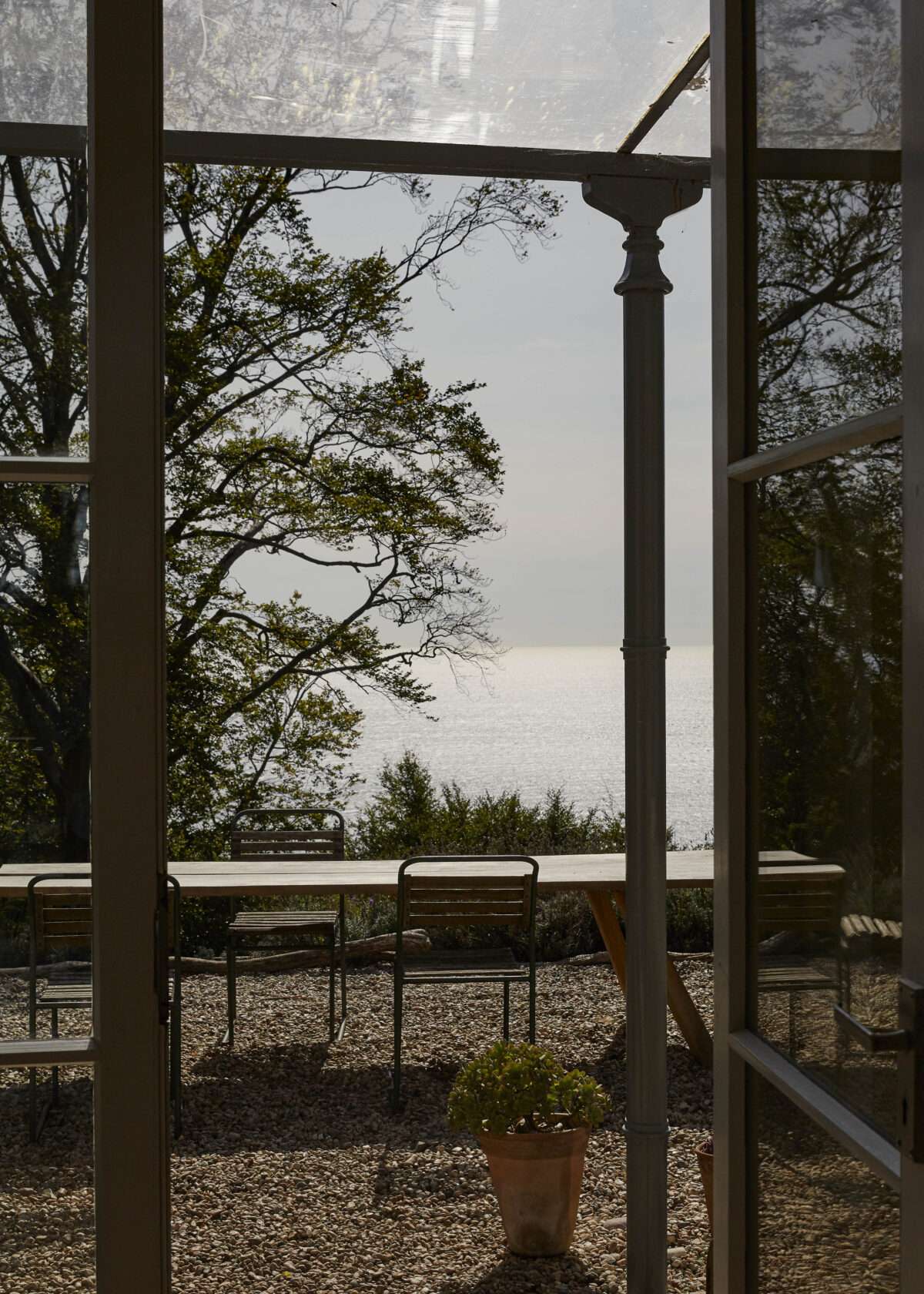
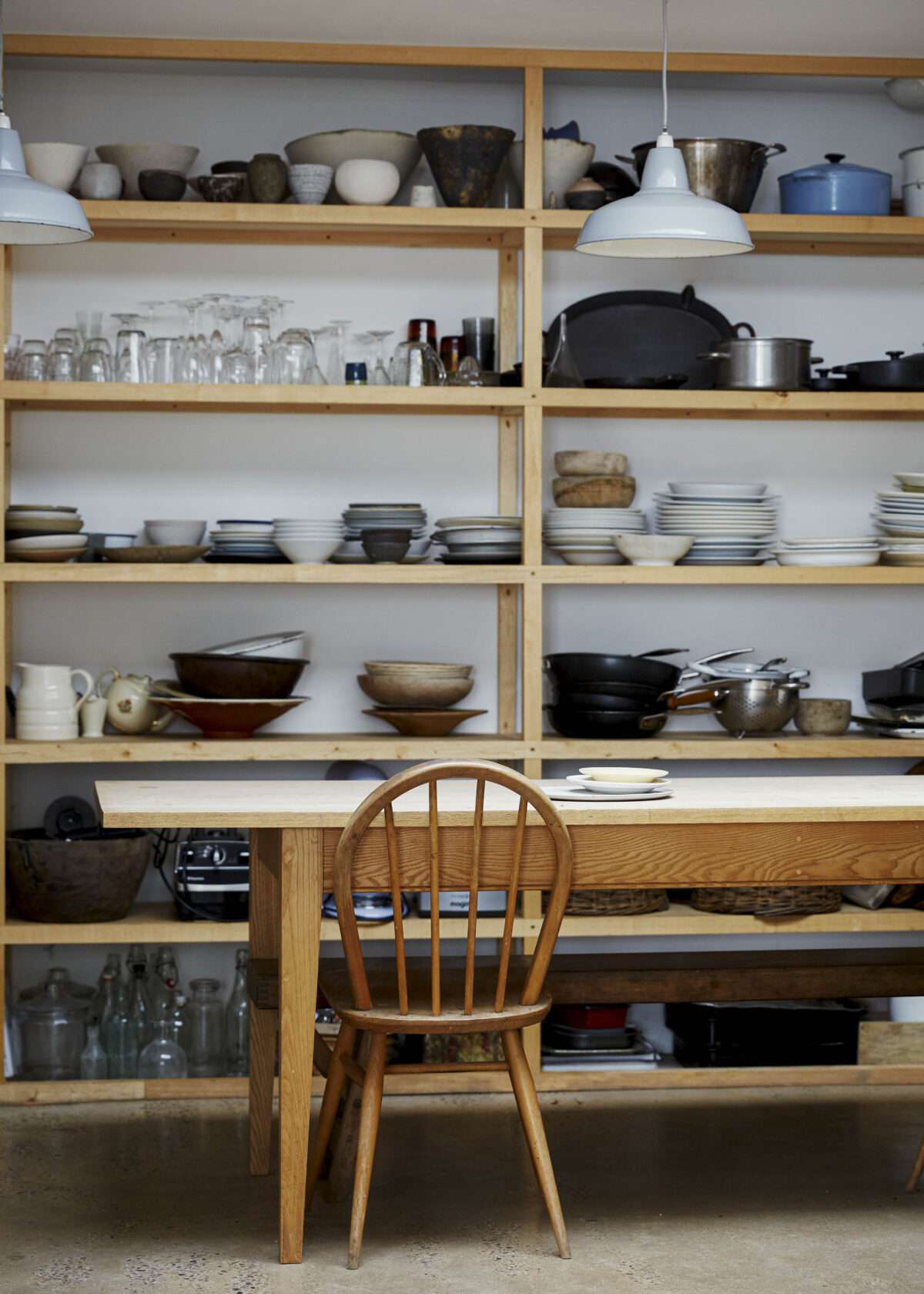
Gill: “My wife, Alice, and I met when we were at college and we had our first daughter when I was 18. I suddenly found myself out of education with a new baby, bills to pay and no work at all. I got a job in a kitchen as a way to make some money – it was never going to be something long-term.
“When Isla, our eldest daughter, was two, Alice and I decided to buy a knackered old camper van and travel through France, Italy and Spain. It was great fun but we had no money. We couldn’t afford to eat out, so I just picked up produce in the markets – mostly vegetables – and cooked them on a stove on the roadside.
“That’s when I realised how good simple food can be, and that cooking well doesn’t have to be expensive or elaborate. You don’t always need meat or fish; fresh vegetables and herbs are enough to make delicious food.
“I’m originally from West Dorset, so I haven’t moved that far – I love the countryside. My two siblings and I grew up in a family that loved food, and mum was a very good cook. We ate home-cooked food – nothing fancy – and we’d all eat together more often than not.
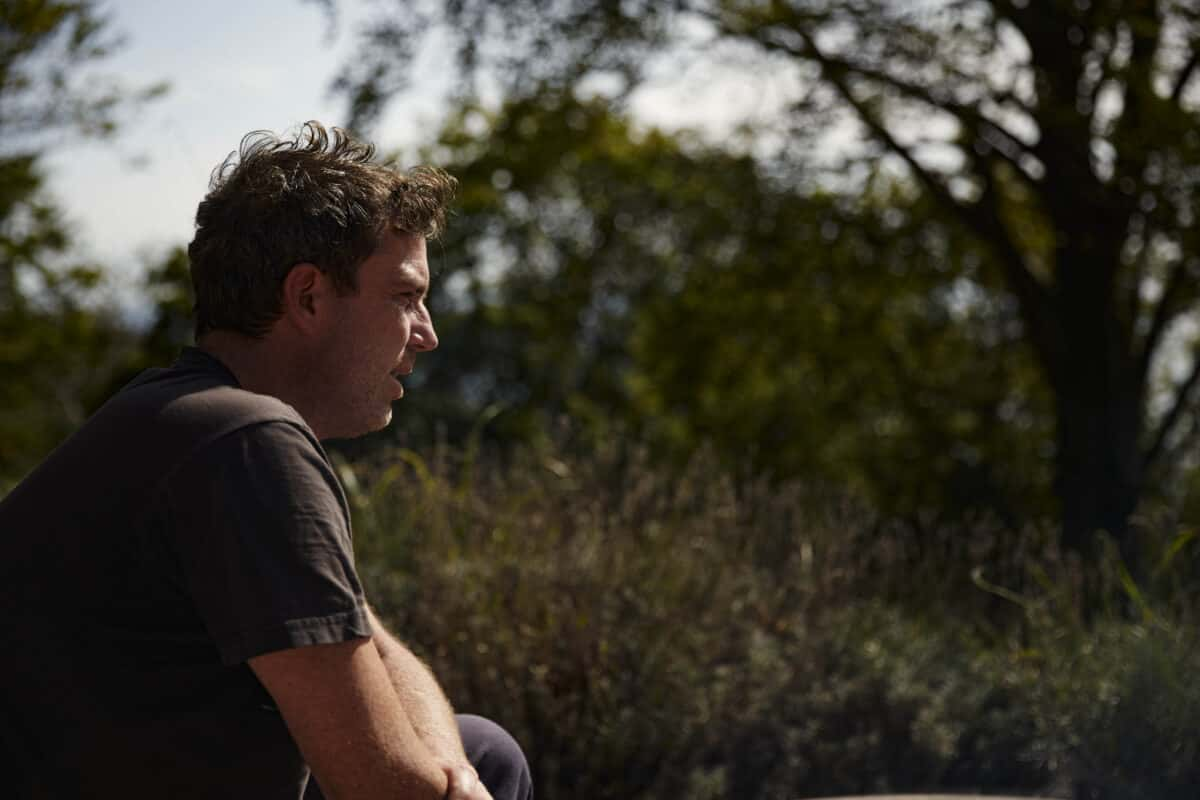
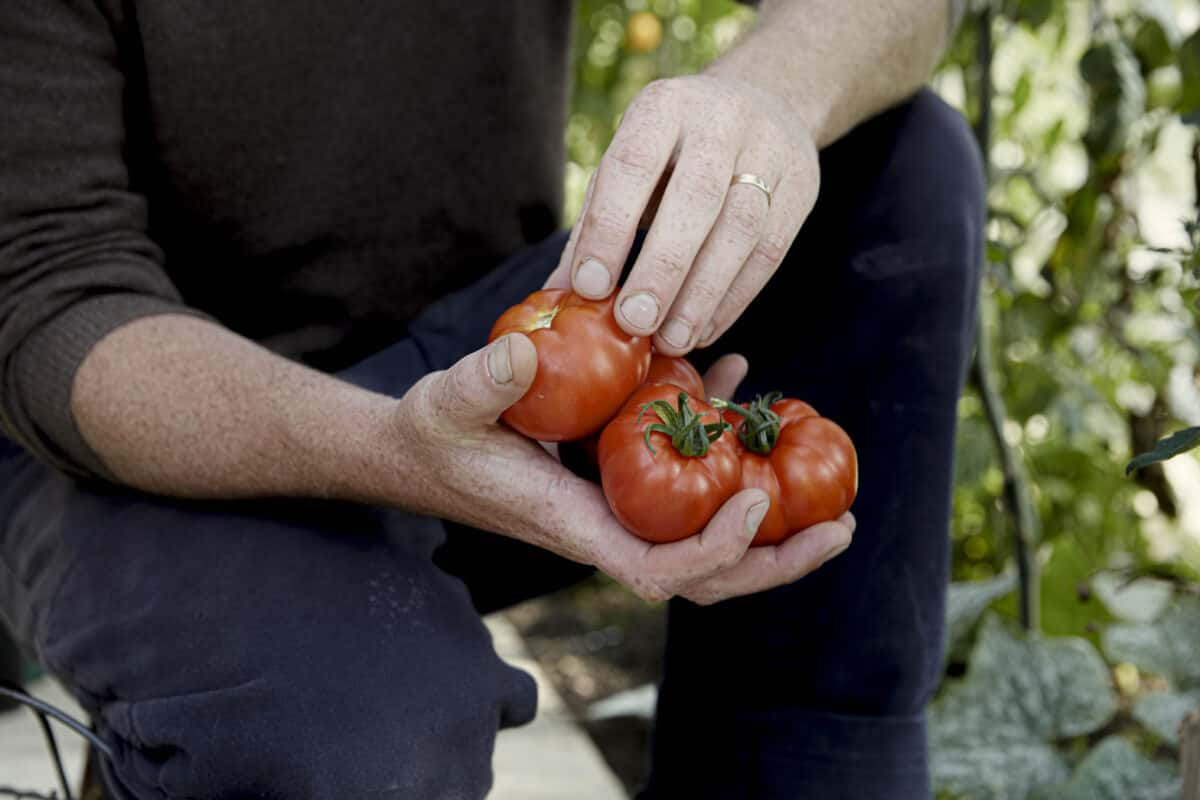
“Looking back, if you grow up in a family that loves food, and you eat well as a child, I think you carry that with you. I watched my parents preparing food and they knew how to cook, how to eat, how to season food properly.
“I consider myself a home cook, first and foremost. My food relies on good ingredients treated in a simple way, which is clearly demonstrated in something like the tomato bruschetta we are having for lunch today.
“The thing that really made the food feel different at River Cottage – where I worked for 15 years – was that we weren’t a conventional restaurant. We were an old farm, really, where people would all sit together, eat the same thing, family-style. And a lot of the dishes that I would cook would just be inspired by what was growing in the gardens, what was in season, what was coming off the farm or coming out of the woods, out of the hedgerows, out of the sea. The menus would usually come together at the last minute. And through that, we hoped to inspire people to engage with food on a more everyday level.
“I think food leads you to other beautiful things – it’s the lifeblood of our world, isn’t it? I studied art and photography at college, and I was always interested in aesthetics, but I just drifted into food. The way I think about aesthetics has evolved as I’ve got older, and being married to Alice, who owns an interiors shop in Lyme Regis, has meant it’s always been a consideration.

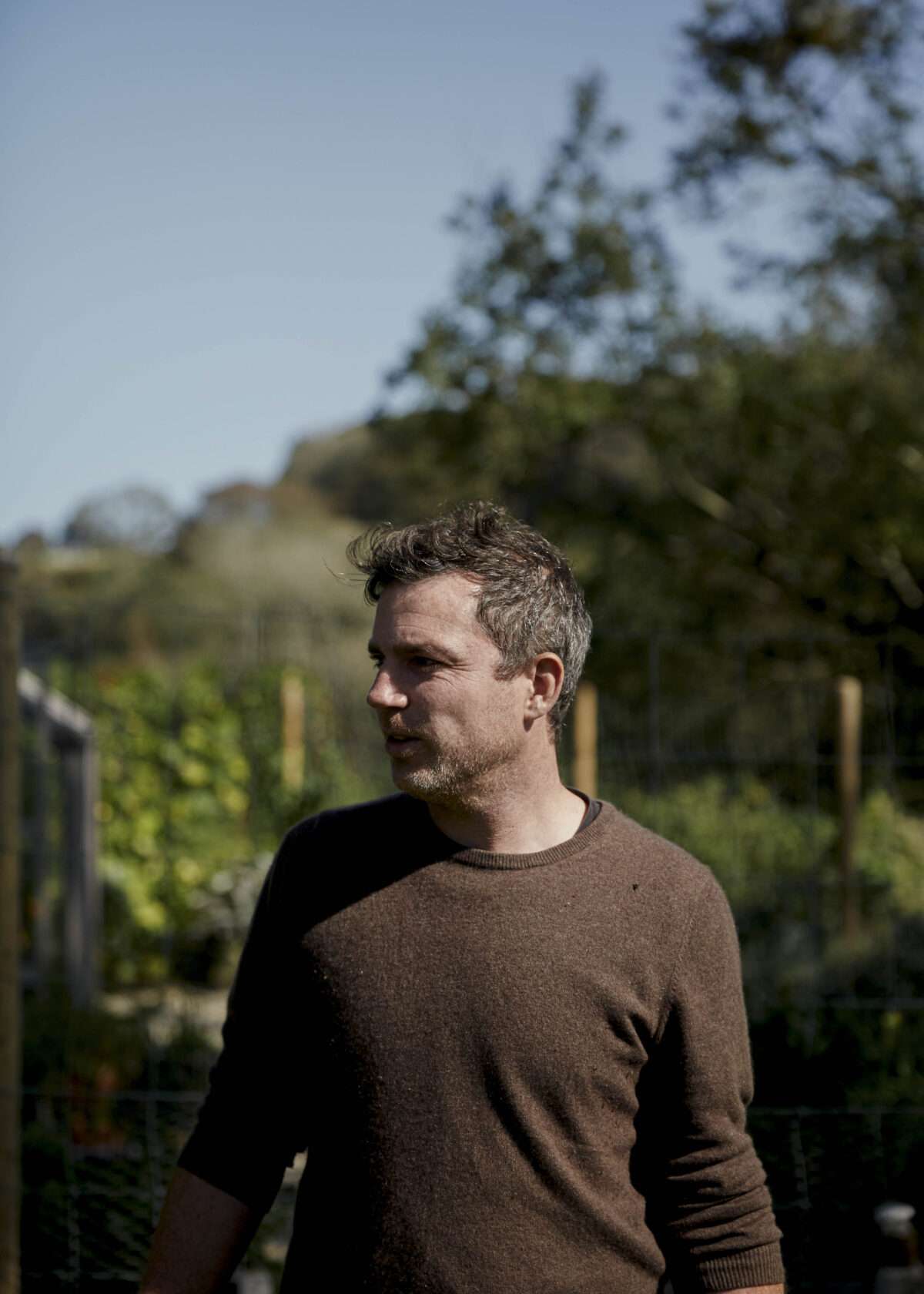
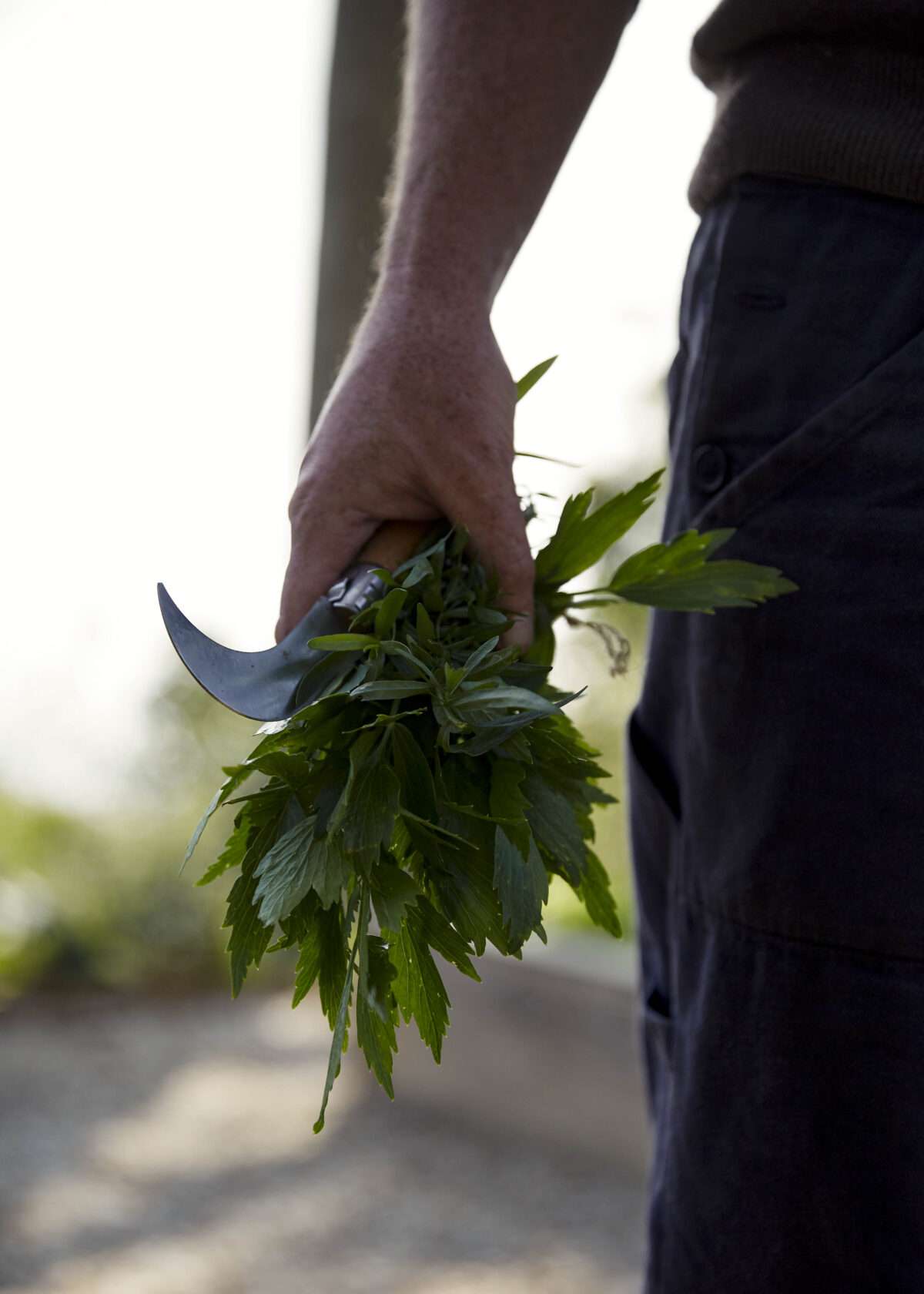
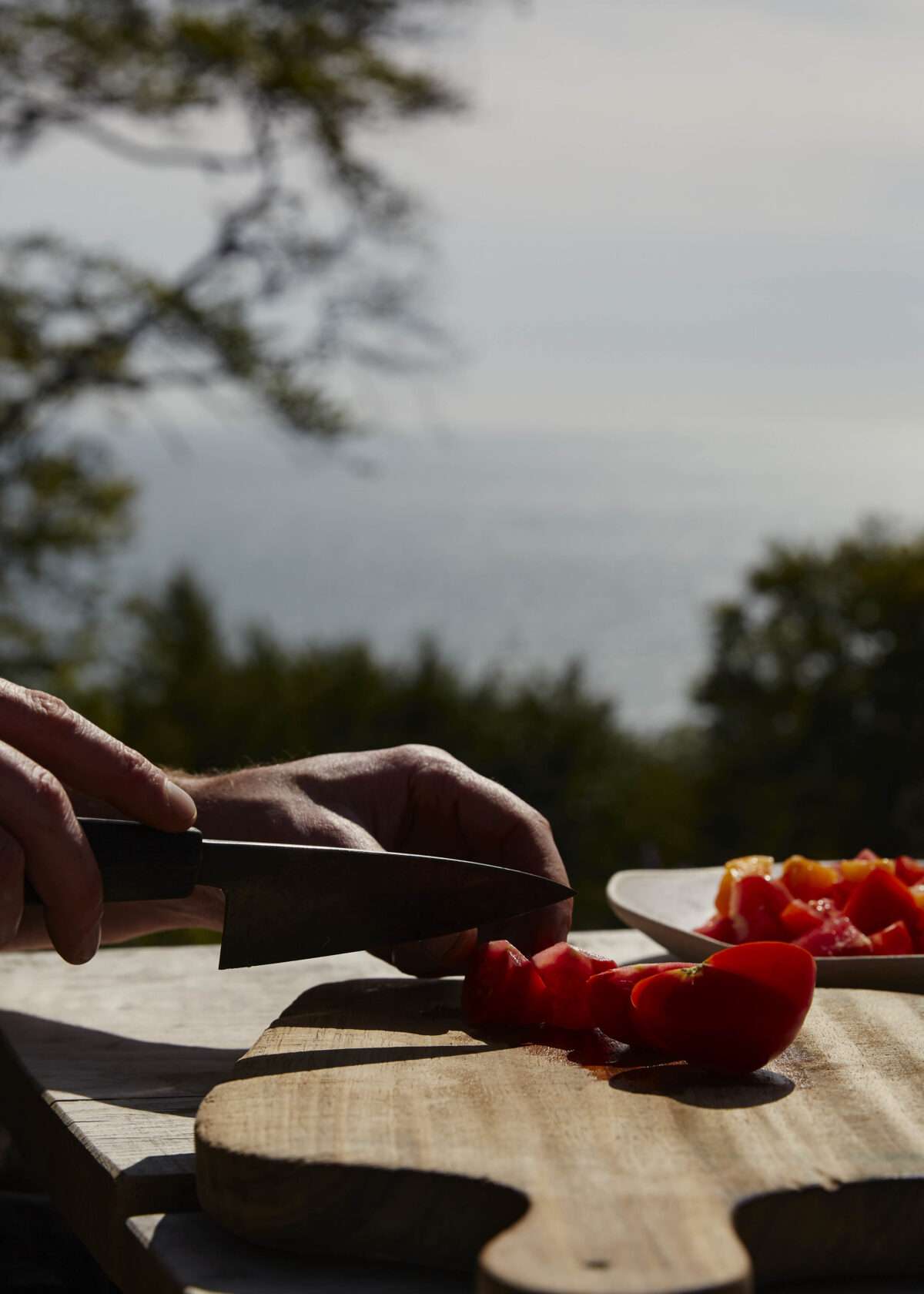
“We found this house as an abandoned folly dug into the hillside, which once belonged to a large Victorian estate. A boarding school occupied the house and grounds for many years, and apparently the boys would sneak down here to brew their own cider and smoke, away from the teachers.
“When we restored it, we knew that the biggest room should be the kitchen, because it’s where we spend most of our time, where we all come together as a family. We wanted to remove a big retaining wall, so when you’re in the kitchen you would look out to the sea. But for one reason or another, partly due to the listing of the building, they wouldn’t let us take it all out. Never say never, though. Instead, we put in a skylight to get as much light to the back of the house as possible.
“The shelves are made of a softwood called poplar. I wanted to keep them open because when I’m cooking I want to see what I’ve got, to see where things are, to reach and grab plates and bowls, pans and pots. A lot of people get a bit nervous about having no cupboards and say, ‘Well, if I did that, everything would be dusty.’ But I don’t really care if it’s dusty. You just wash things before you use them.
“The kitchen work surface came from the gymnasium floor in the boarding school. The gym got knocked down and I managed to get hold of some of the floorboards. The wood is jarrah – it’s from Australia, and it’s very, very tough, perfect for sprung gym floors. Just as teak can be left raw and scrubbed clean, you can do the same with this. I’ve never had to oil the work surface; I just scrub it.
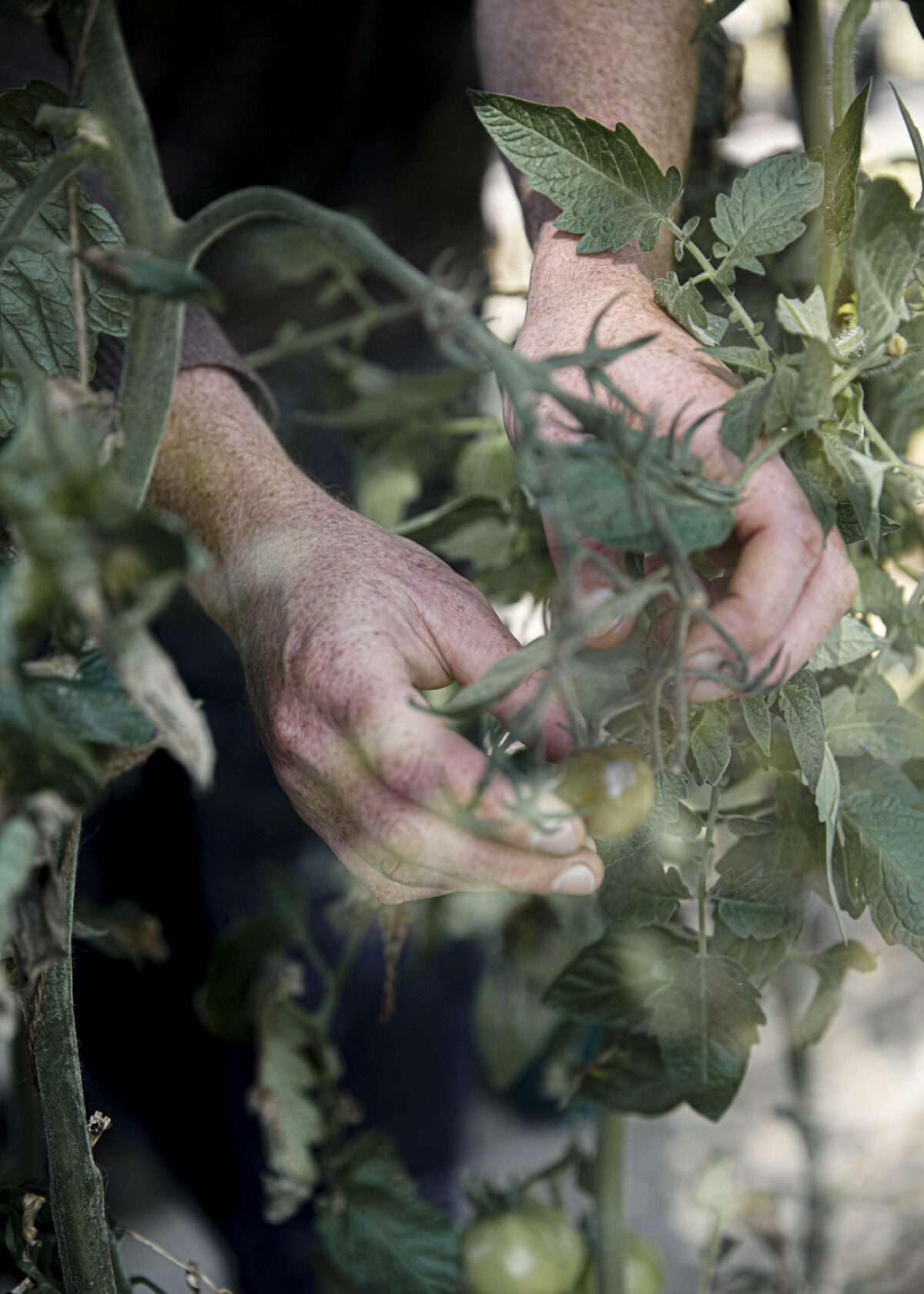
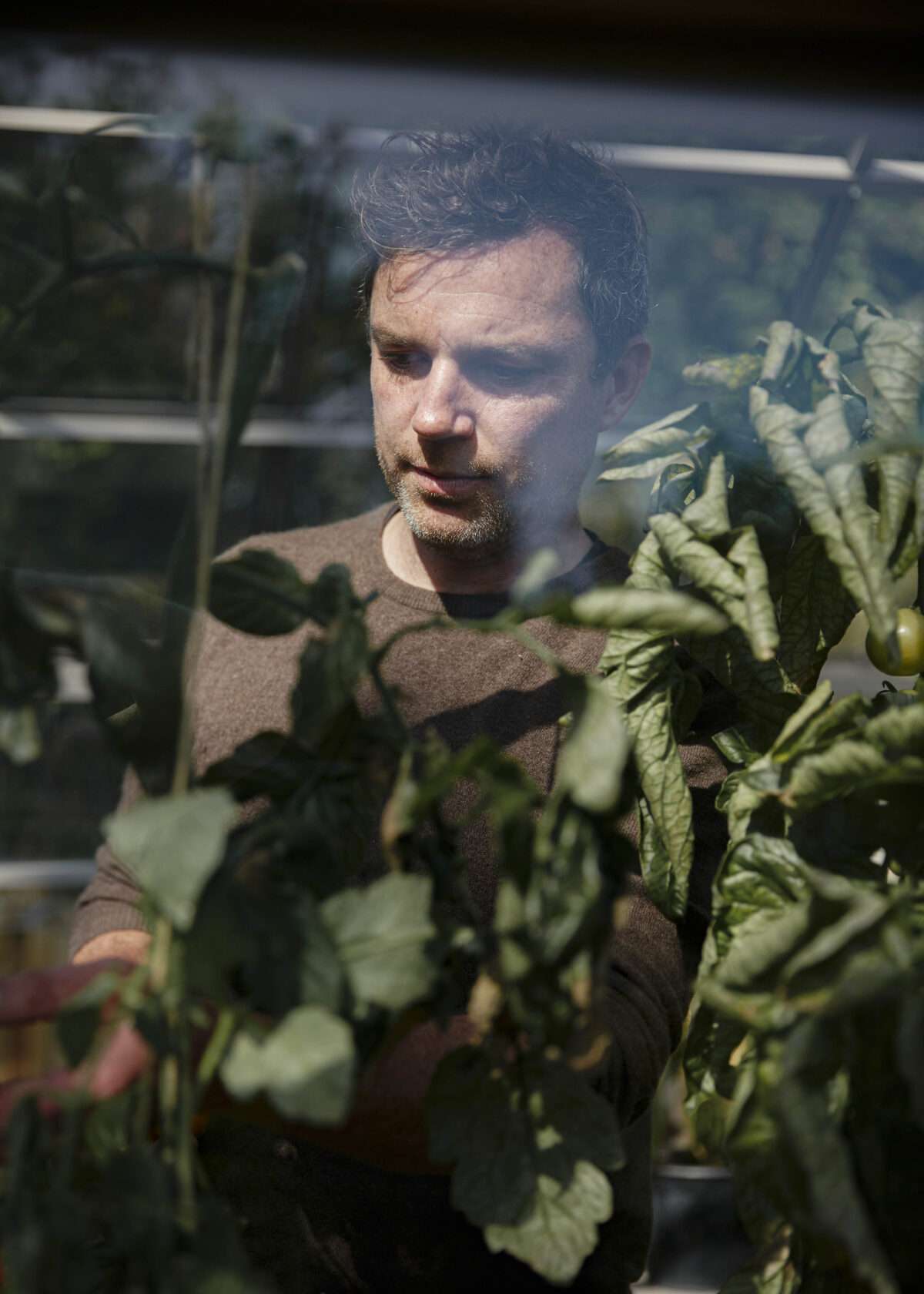
“Alice makes ceramics, which we have a lot of. She always says she’s no good, but I think they’re some of the best I have. They’re all coil-built by hand, and I love the crudeness of them, but that they’re also quite refined. Everything else is picked up from local independent makers, car boots, junk shops and flea markets.
“I love to collect cookbooks, but I don’t really cook from them that often. I just love the process of making books and seeing what other people are doing with them. Certain books, such as the St. John books – which are a bit like my bible – get referenced more than others, but not for weights and measures, per se.
“We can fit 10 people around the table. We like entertaining, but it’s sporadic; sometimes we’re so busy we don’t get a chance. Normally, we’d cook for friends or family at least a few times a month. When we do, we’ll do it quite big and have loads of friends for the weekend.
“My father made us the table as a moving-in present, and everyone who eats at it signs underneath. Over the seven years we’ve been here it’s become a lovely thing, with lots of messages and notes of thanks and jokes and swearing. It’s our visitors’ book, so people eat and they sign it, and I really like that. It’s a wonderful record of good times.
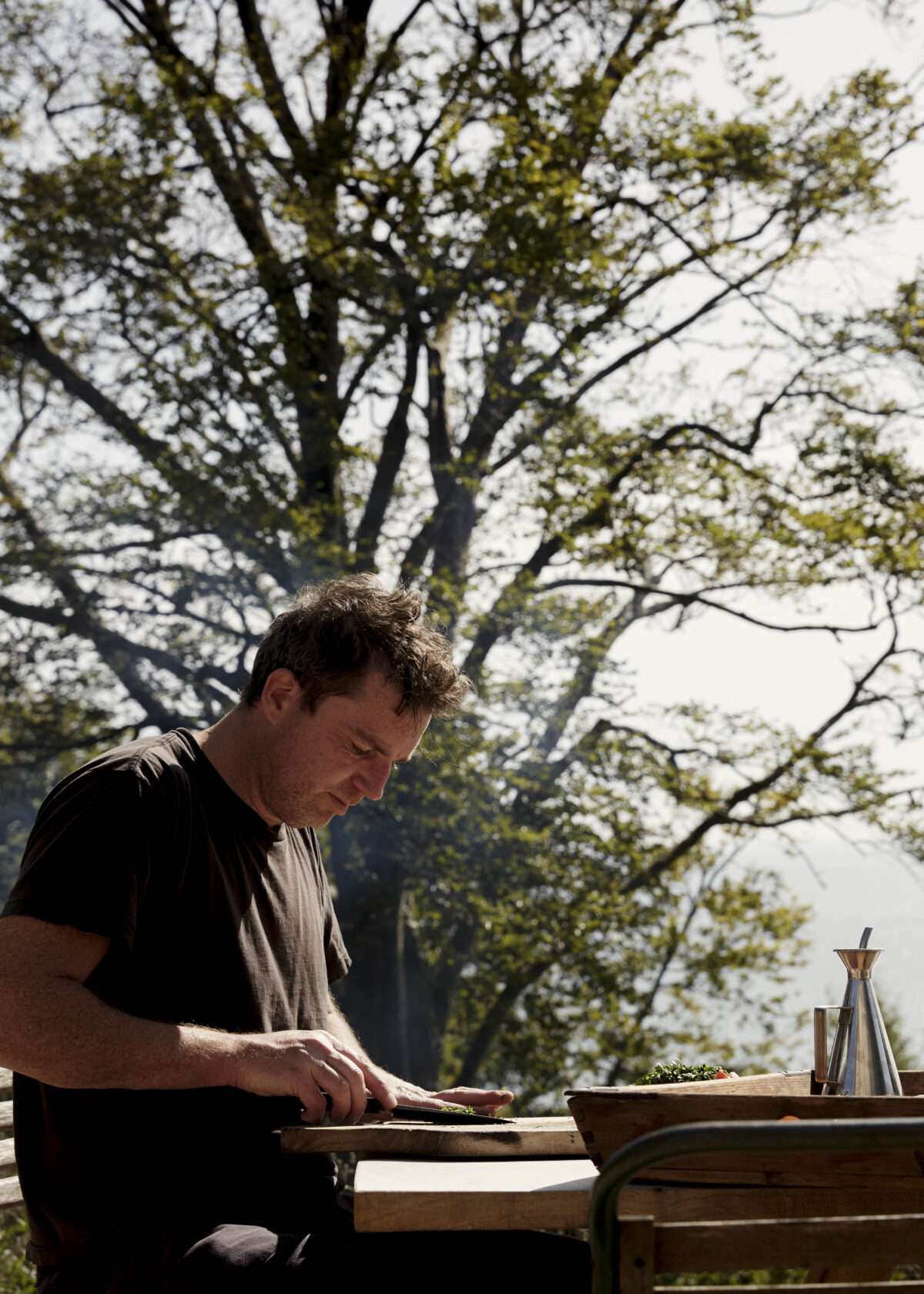
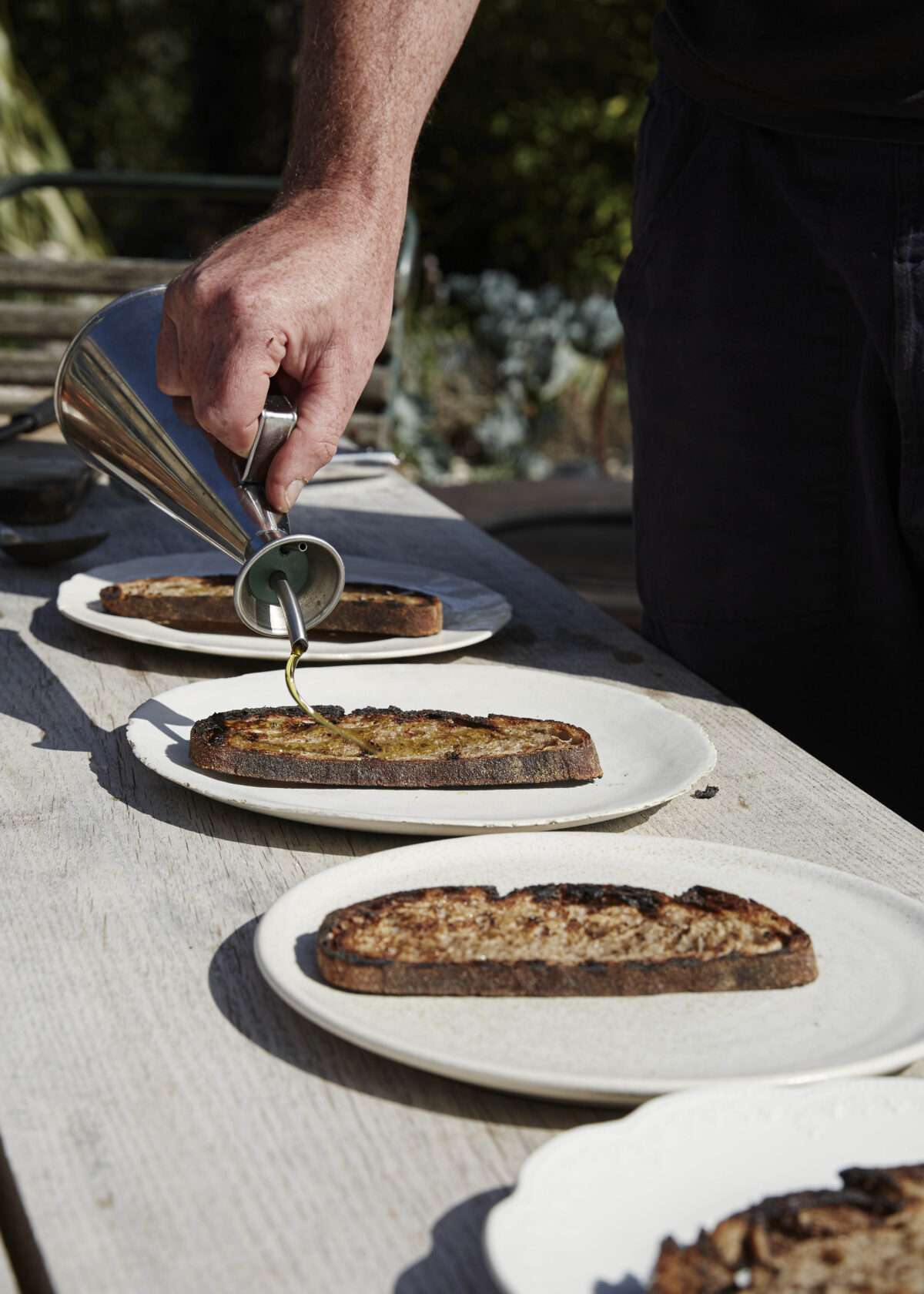
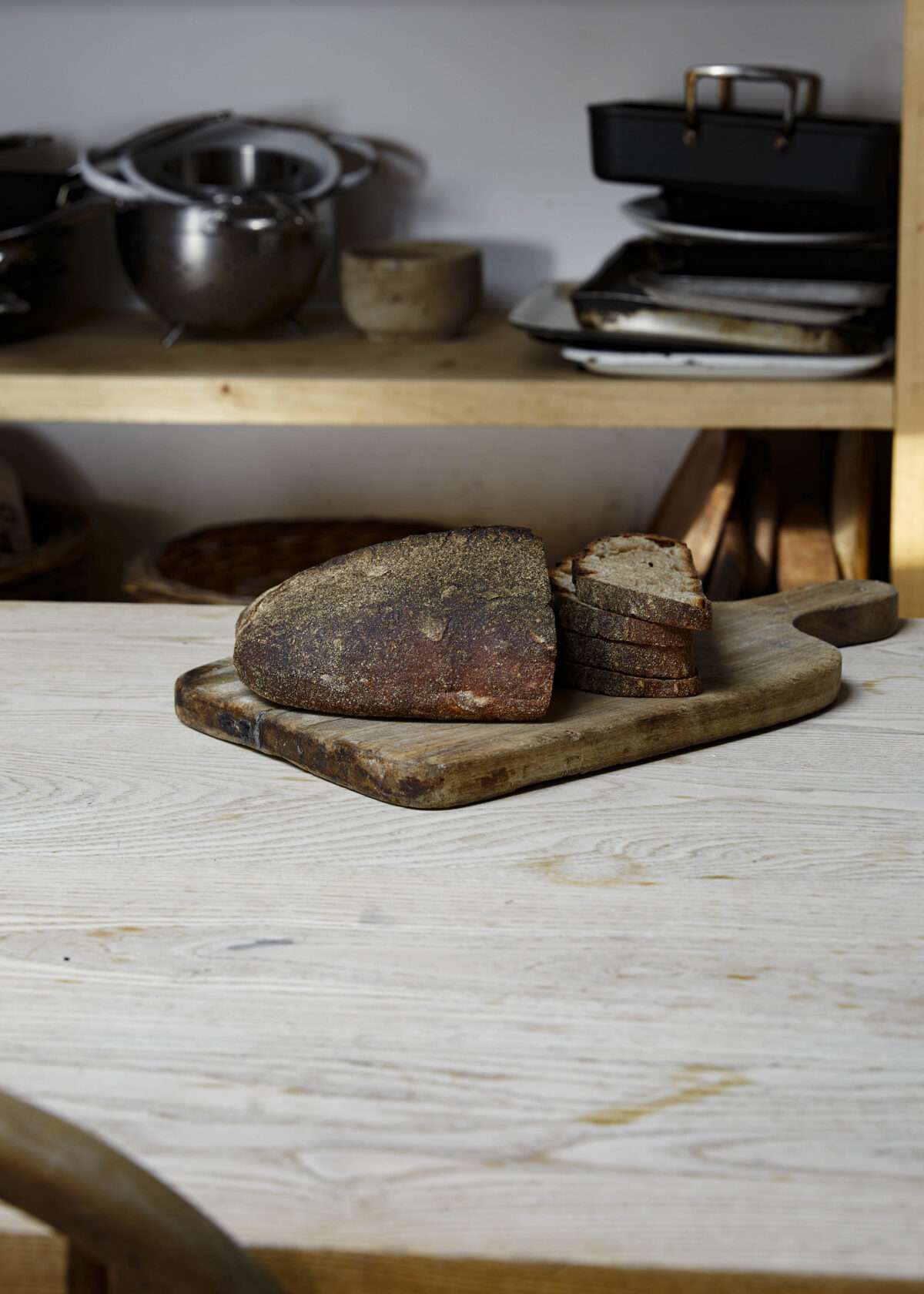
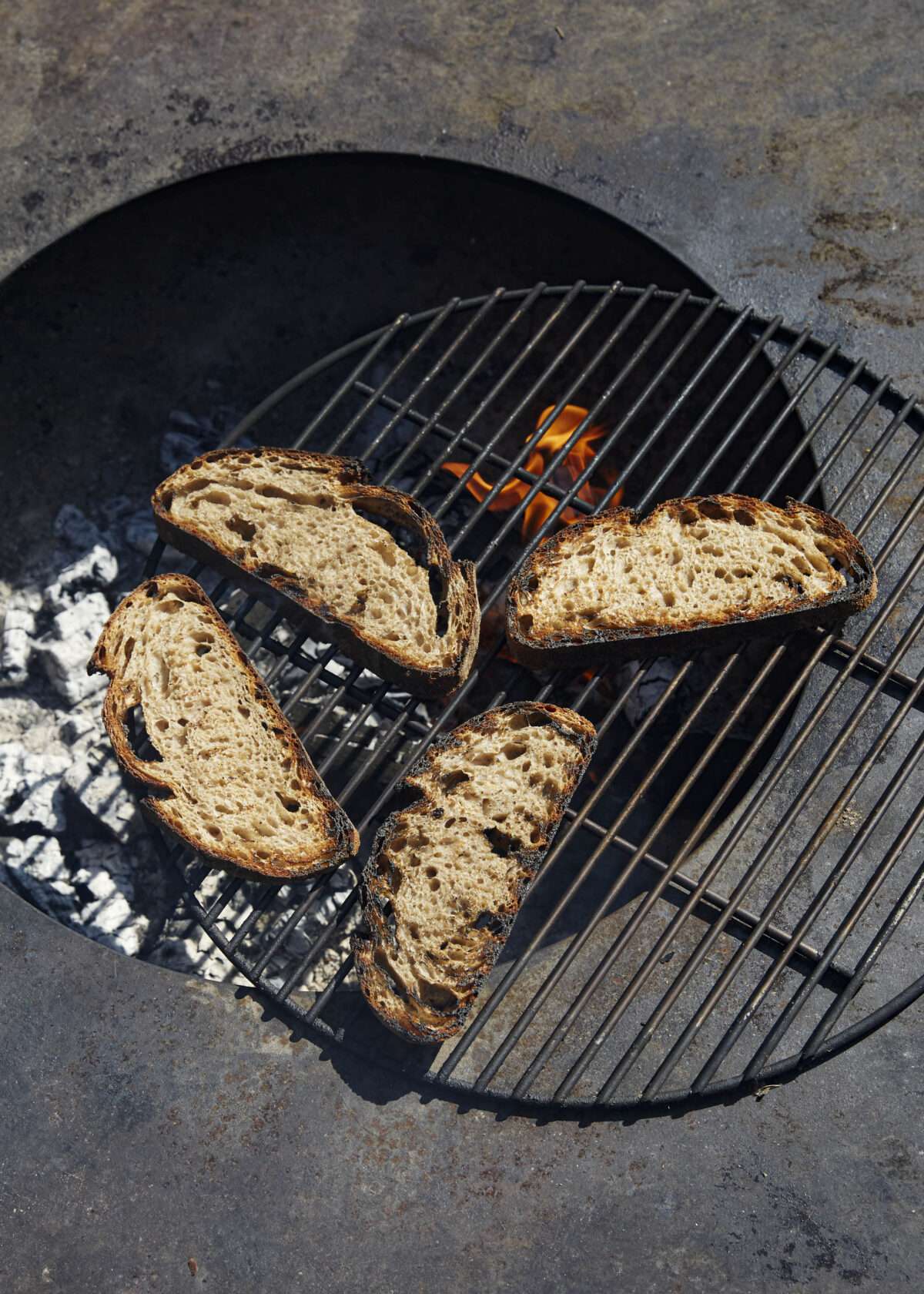
“I made the outdoor table for Alice’s birthday. The oak came from a wood below Eggardon Hill in Dorset, very close to where I grew up. The tree was milled by a friend of mine and the table itself is based on a Hungarian butcher’s table, with a gap in the middle. I like the angle of the legs. Over time the wood will weather down to silver.
“My time at River Cottage helped me to understand how important that connection between growing and cooking really is. But until recently I’d never had the time to have my own productive garden at home. I set up the veg garden at the beginning of 2020, just before the first lockdown began. It’s been so brilliant because I’ve had the time to really get into it. I spent weeks reading about the best way to do things and, although I had as much failure as I did success, everything that did work tasted amazing. It was a very rewarding thing to do and I feel very lucky to have the space to grow some of my own food.
“The next project I’m working on is a small studio for me and Alice. It’s a space I’ll be able to write in, as this currently happens at the kitchen table, and Alice will be able to make pottery in there too. It’s a timber-frame structure, and all the wood I’ve used in the building has come from trees grown right here in Dorset. My dad is a joiner and we machined all the timber together. So it’s very significant, and very lovely, in that way. I’m just waiting for the electrician who never shows up, and then it will be finished.”
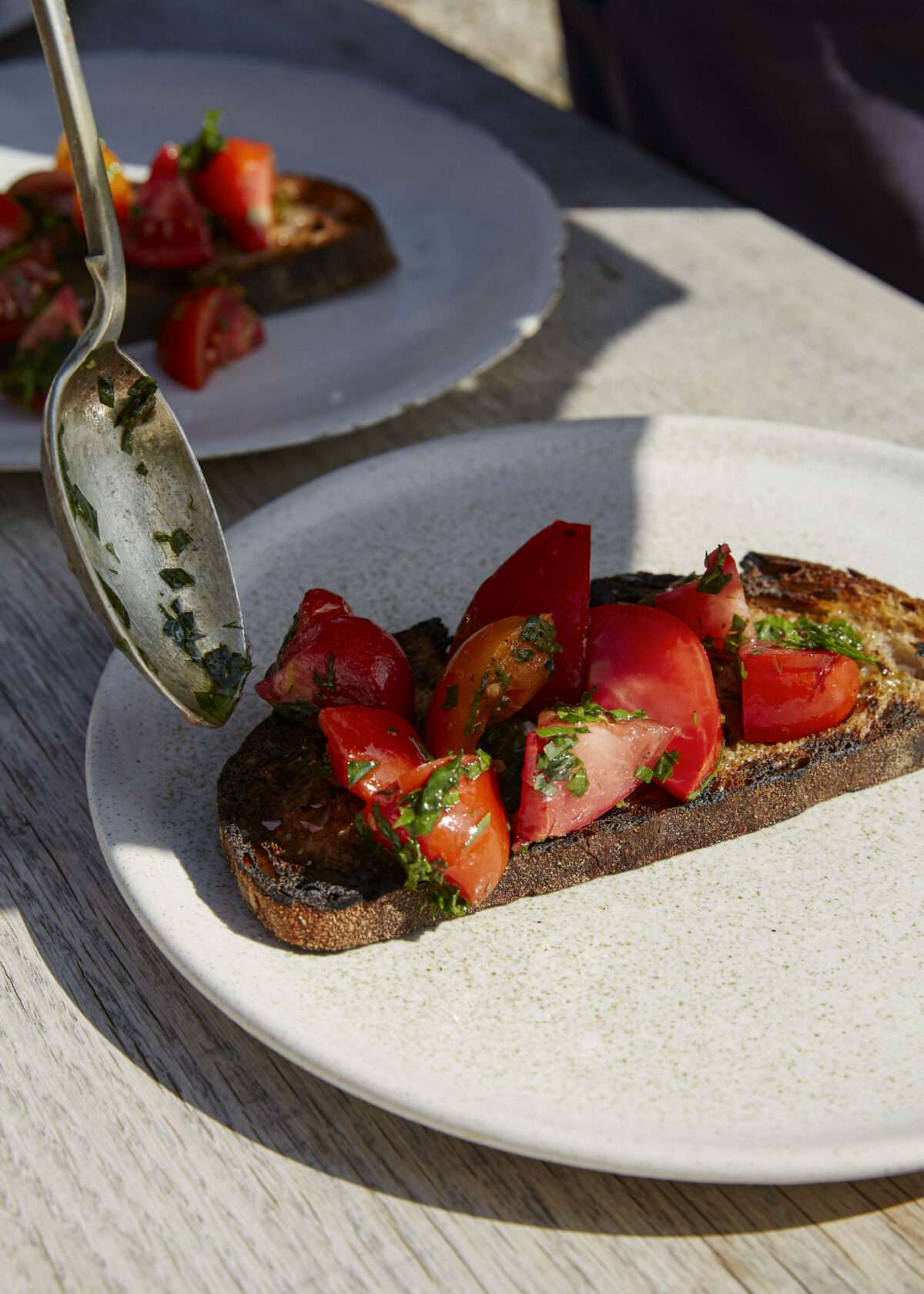
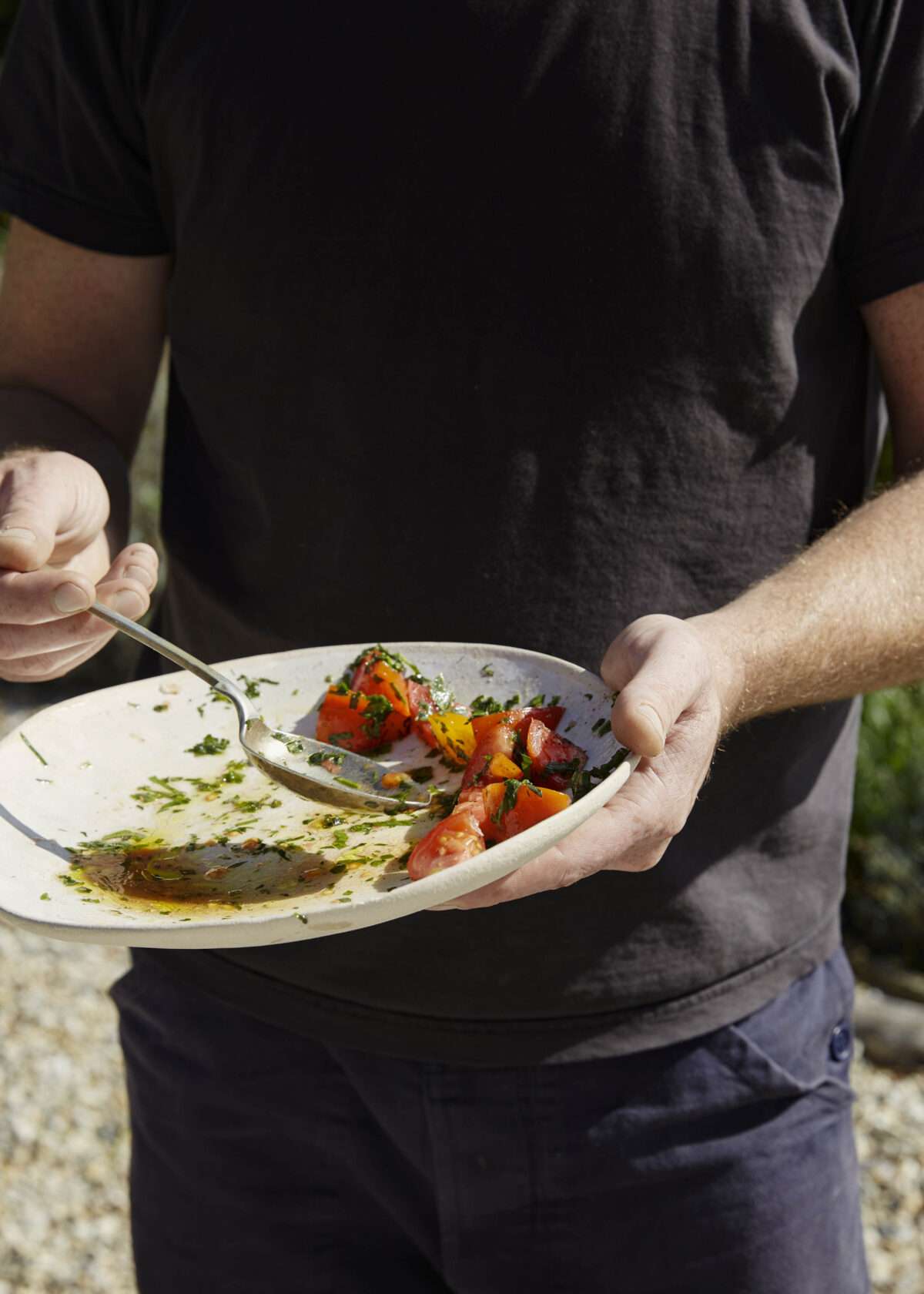
Gill’s recipe for tomatoes on toast with garden herbs and olive oil
“So much of the fruit and veg we like to eat has become seasonless, and nothing illustrates this difficult truth more starkly than the tomato. Tomatoes are, as you probably know, available 365 days a year and for many of us that’s normal. But the all-year-round tomato is just a dull constant we never think about, sitting alongside other dull constants. Sadly, we’ve forgotten that tomatoes can be special; that a naturally grown, sun-ripened tomato, eaten when it’s plump and warm and soft enough to split, can be a heartbreakingly wonderful experience.”
Serves two
400g large, soft, ripe tomatoes
1 small handful of parsley leaves, picked and chopped
1 small handful of lovage leaves, picked and chopped
1 small bunch of chives, thinly sliced
1 small handful of tarragon, leaves chopped
2 tsp red wine vinegar
Extra virgin olive oil
2 thick slices of sourdough bread
1 small garlic clove
Flaky sea salt and freshly ground black pepper
Cut the tomatoes up into bite-sized pieces and place them in a bowl with the herbs, vinegar and a generous glug of olive oil. Season with plenty of salt and pepper and tumble together.
Toast the bread until it’s crunchy around the edges. Place the slices of toast on a plate and lightly rub the surface of each slice with the garlic clove. Drizzle each toast liberally with olive oil and sprinkle with flaky salt. Pile the tomatoes and any juices from the bowl onto the toast and serve at once.
